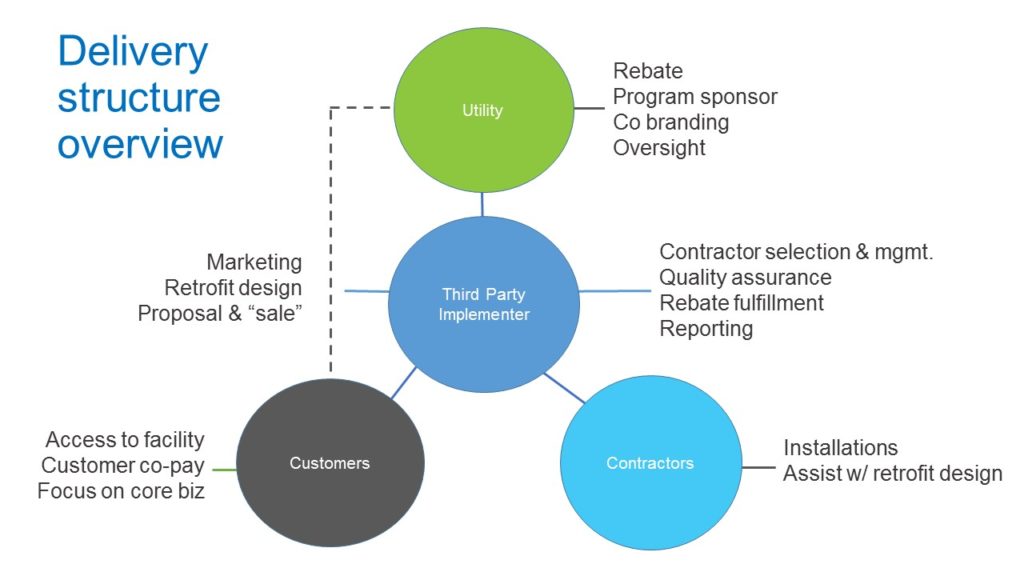SMARTScale
Online Tool / February 21, 2017 / Building Innovation, Deep Energy Retrofits / Existing Buildings
Introducing SMARTScale...
In 2014, the US Department of Energy (DOE) awarded a grant to NBI partner Ecology Action to create and demonstrate a nationally scalable model targeted to utility and public benefits efficiency program operators for delivering deep retrofits in small commercial buildings called the Small Market Advanced Retrofit Transformation (SMARTScale) project. NBI worked on the project team to develop and help scale the model program. The resulting toolkit is free and accessible below.
Use SMARTScale
This deep retrofit program includes upgrades to lighting, HVAC, and refrigeration equipment. It’s a “one-stop”, turnkey package of services that has documented savings of 8-33% from baseline while still achieving exceptional overall program and total resource cost effectivness.
The SMARTScale model combines several essential program elements and delivery tactics that can overcome small and medium business (SMB) market barriers and exceed the conventional results achieved with traditional direct install (DI) programs. The main keys to the SMARTScale model’s success are:
1. Supportive Regulatory Environment. Operating within a regulatory environment that permits and encourages innovation and allows cost-effectiveness tested at the program, rather than the measure level.
2. A Program Implementer tied to “Pay for Performance”. Delegation of a large portion of implementation to an independent Program Implementer (PI) with a contractual obligation to achieve results through a “pay-for-performance” contract. The Program Implementer, or utility program implementer, is the liaison between customer and contractor to ensure quality and reduce disruption to the customer so they can keep their focus on their business.
3. Direct Install Model. The Direct Install model allows energy efficiency improvements to be initiated by the program rather than waiting for reactive opportunities associated with larger events such as equipment failure or tenant or use change. Although ‘event’ savings can be larger the DI approach results in a greater volume of projects that bring aggregated savings critical to energy and/or carbon reduction targets.
4. Diversity of Measure Types. Requirements for comprehensive solutions by setting energy-savings targets distributed across different measure type categories
5. Blended Incentive Structure. An incentive structure that encourages customers to pursue comprehensive projects with deeper savings by blending a customer buy-in with program incentives and facilitated financing.
6. Rigorous Program Processes. Delivery tactics to enhance program performance, such as a blended customer acquisition model, hybrid energy savings calculations, and rigorous contractor and equipment management techniques.
The SMARTScale toolkit includes documents, forms, tools and materials needed to implement components of the program. From contractor management to customer engagement the process is outlined in the SMARTScale Implementation Guide. The Implementation Guide and free resources are available here.
See this one page summary for info and access to the Toolkit.
Read our blog on SMARTScale.
Learn more in this recorded webinar.

